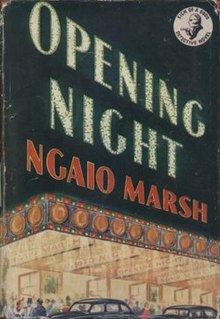 The Wife of Martin Guerre (1941) was the final book I read in 2019, and I read it pretty much in one go – not all that difficult, as it is just under a hundred pages. I hadn’t heard about it until I was reading someone’s favourite books in The Week – I don’t remember whose, but they chose several lesser-known books that I loved so I thought I could probably trust them on this too.
The Wife of Martin Guerre (1941) was the final book I read in 2019, and I read it pretty much in one go – not all that difficult, as it is just under a hundred pages. I hadn’t heard about it until I was reading someone’s favourite books in The Week – I don’t remember whose, but they chose several lesser-known books that I loved so I thought I could probably trust them on this too.
One morning in January, 1539, a wedding was celebrated in the village of Artigues. That night the two children who had been espoused to one another lay in bed in the house of the groom’s father. They were Bertrande de Rols, aged eleven years, and Martin Guerre, who was no older, both offspring of rich peasant families as ancient, as feudal and as proud as any of the great seigniorial houses of Gascony.
So the novella opens. Bertrande has only been told about the wedding the day before, and she is a little bewildered by what has happened – a match between two families that has been long planned. The wedding ends with her new husband pulling her hair and hitting her, but they are equally unsure of themselves as they retire to their new marital bed. Don’t worry, nothing unpleasant happens there – they are married but not expected to act as grown ups just yet.
As we move forward quickly in time, we see them about a decade later. They have a young son and love one another, though Martin is not an overly affectionate man. Rather, he is ambitious and rebellious. He is the sort of man who will choose to go bear hunting despite being forbidden from doing so, and doesn’t feel much chagrin when his father hits him across the face for it. A couple of teeth are broken, but this is the discipline he uncomplainingly accepts. His father is the dominant and violent head of the family, and that’s that.
So, when Martin decides to plant fields of crops without his father’s permission, he knows he’ll be in trouble. He tells his wife that he will disappear for a week, to give his father time to calm down. And so he goes, not telling her where – so that she isn’t lying when she tells the patriarch that she is ignorant.
But, after a week, he hasn’t come back.
And weeks turn to years without him. In that time, both his parents die and Martin’s uncle installs himself as head of the family. Betrande finds her place in it, but never loses hope that the man she loves will come back.
And he does, almost a decade after he left! All is forgiven and he settles back into life with Bertrande, and they have another baby together. But she can’t shake the feeling that this isn’t her husband. He looks the same, he knows about their life together, he even has the same two broken teeth – but he is kind and loving where her husband was ruthless and dominant. Eventually she can’t keep quiet, and asks that a court decide whether or not this man is her husband.
I shan’t spoil the end, though this is based on a real story, oddly enough. I hadn’t heard of it, though it’s been used many times in fiction. It’s certainly an interesting premise, but what makes Lewis’s novella so good is how deeply she takes us into Bertrande’s feelings – her uncertainty and insecurity. She is a very human character, and the book never falls into the trap that usually puts me off historical fiction, of seeing everything in costume. It feels real and eternal, and there aren’t heaps of period details to show off the research, or dialogue that sounds strange to modern ears. I call it the ‘jeans test’ – would it be as interesting if all the characters were wearing jeans instead of their historical outfits? And the answer here is definitely yes.
I’m glad it was so short. It was exactly right to focus solely on the abbreviated marriage and the dilemma that came afterwards. Anything extraneous would spoil it. So, thank you to whoever it was who recommended it in The Week!












